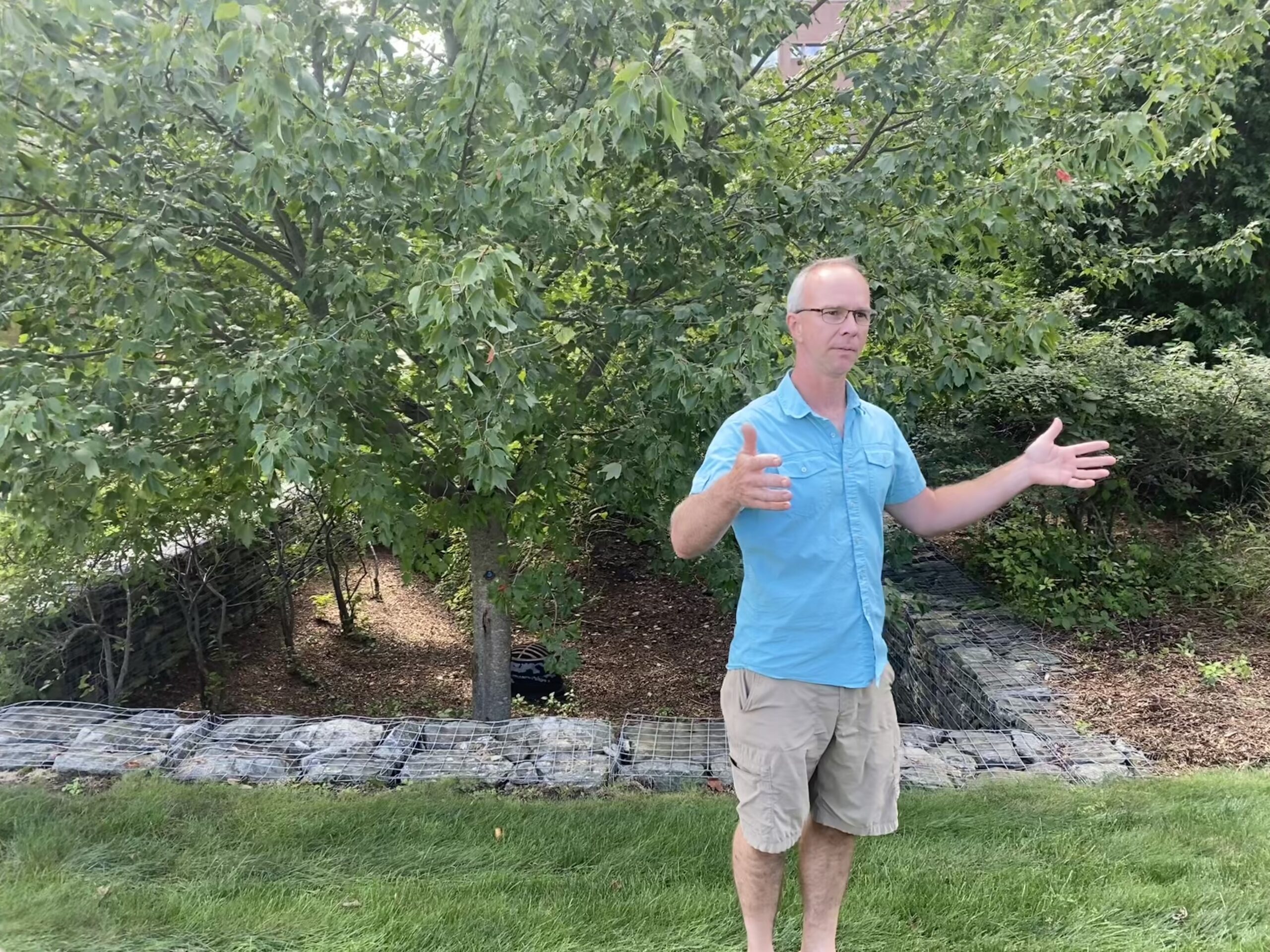
Maïna Durafour

Maïna Durafour
Picture this – heavy rain pounding down during violent storms in the middle of summer, followed by days of intense heat. Many of us are experiencing this every year. When the sun shines again, you may think the water has left – but heavy rain has a significant negative impact on our soil and rivers.
Michael Dietz is the director of the Connecticut Institute of Water Resources and a joint faculty member in the Department of Natural Resources and the Environment at the University of Connecticut. His work focuses on storm water and its consequences. He has been working for years with municipalities to help them deal with stormwater issues such as water pollution and soil erosion. Dietz also advises landscapers and homeowners on how to install new green stormwater practices.
The University of Connecticut has been adopting many of these practices, including rain gardens and permeable pavements. When it rains, untreated water comes off of buildings, parking lots, and roads, and flows through the stormwater system into Connecticut’s rivers. Rain gardens and permeable pavements collect the water and let it sink into higher grounds so it doesn’t cause problems further downstream. Rain gardens also provide habitats for wildlife and can be beautiful built environments for people to look at.

These solutions contribute to reducing the pollution of local streams and ultimately the Long Island Sound, where all of Connecticut’s rivers end. The practices have the further advantage of improving aesthetics and green space in developed areas like in New Haven, where many rain gardens have been put in place.
According to Dietz, people are reluctant to change their behavior because they prefer the known to the unknown. Engineers and landscape contractors often refuse to take in new ideas on how to design storm water features, he said.
“They view them as untested,” Dietz said. “They are not sure how they would work; they don’t want to take a risk.”
Marianne Barton, clinical professor and director of the Psychological Services Clinic, explained that people are willing to change their habits when they are afraid of negative consequences or when they expect positive consequences. People have to believe that their effort will make a difference or be rewarding in order to act on it.
Gaining community support can be a key factor in pushing forward these technologies.
“We need to be part of larger groups that share our concerns and our beliefs that we can make a difference,” Barton said.
She also said that a traumatic event related to climate change could push people to be more interested in the development of sustainable infrastructure.
“When people are at a time of a significant life change that is when they are most likely to change their behavior,” Barton said.
Dietz said he sees hope in the younger generation of engineers, who take these dilemmas to heart and are more willing to work with new methods. This is at least the case of the new generation of engineering students at the University of Connecticut, who are trained on stormwater issues during some of their classes and the conception of their senior design project, Dietz said.
“Younger people are definitely more open to those things and that certainly helps,” he said.
But this issue is not only generational. Towns have old regulations in place that make it difficult to expand stormwater infrastructure. Some regulations impose minimum road widths that can be too wide and generate excess runoff, or require curbs that don’t allow for any runoff at all, according to Dietz.
However, the Municipal Separate Storm Sewer System (MS4) requires towns to disconnect impervious cover and remove barriers to green stormwater practices by looking at their regulations. New Haven, Waterbury, Hartford or Bridgeport are part of the MS4 permit.
However, every town has its own set of regulations and Dietz said there is very little state regulation in the United States when it comes to environmental issues. Each town has different needs, budgets and resources, which poses a challenge in itself.
Dietz said that changes are needed immediately. In Connecticut, the risk of bigger and more destructive storms is ever present. People like Dietz are working diligently to educate the public and limit the damages of these catastrophic events.
Dietz said that when he was younger, he envisioned himself “being able to make these changes that needed to happen and fix these problems not single handedly, but in some small way.” But he’s “disappointed overall with the rate of change that’s happened because it changes slowly.”
However, he keeps working towards educating people on stormwater management and the installation of green infrastructure.
One of his coming projects is to write a proposal to fund students to work on the design of green infrastructure and disconnect impervious cover in coastal areas. This would have a tangible benefit for these cities which are the most impacted by stormwater issues.
This project is intended to push coastal cities to do more in terms of green infrastructure, as well as teach students more deeply about the conception and use of them.
Dietz acknowledged the challenging scope of his proposal but reiterated its importance. “You’re going big or you’re staying home.”